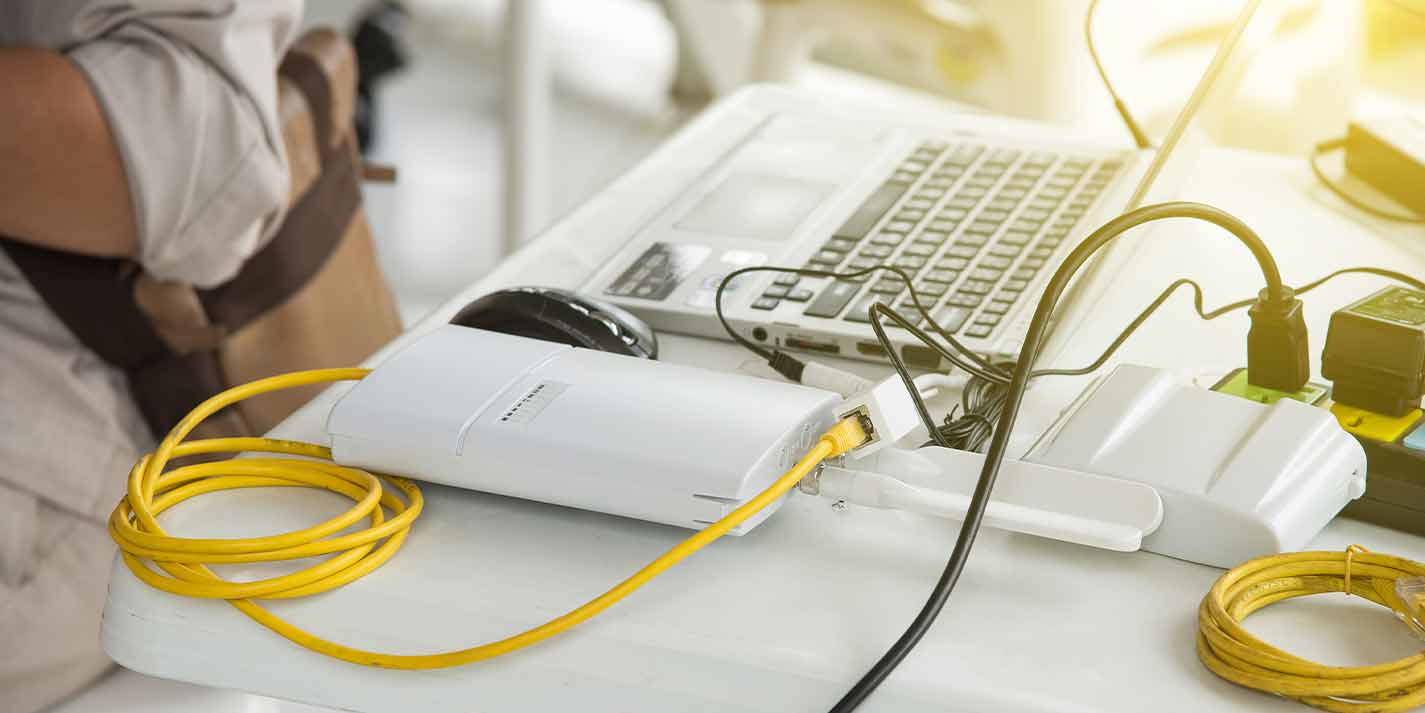Have you ever wondered how companies like Skype and Facebook are able to provide users the capability to communicate with people all over the world for free?
The secret is SIP, aka Session Initiation Protocol.
SIP is the protocol that enables VoIP, the technology that allows voice calls to be transmitted over the Internet. Though you’ll often hear VoIP (Voice over Internet Protocol) and SIP used interchangeably, this is an inaccurate oversimplification.
In reality, VoIP is a broad term that refers to any Internet-based phone service. It relates to making and receiving calls using an Internet connection. This includes SIP. So, you can think of SIP as the protocol that makes VoIP possible. To sum up the difference, VoIP encompasses a wide array of technologies to function, and SIP is one of them.
What Is SIP Trunking?
Now that you know what SIP is let’s define SIP trunking. SIP trunking uses a data connection that combines session initiation protocol (SIP) and real-time transport protocol (RTP). SIP trunks are used in conjunction with IP-PBX systems to replace traditional PRI and analog circuits. A trunk is a line that carries the signals. Think of it like a pipe.
So, what does SIP trunking actually mean? In simple terms, SIP trunking is the ability to make and receive voice calls over your existing data or Internet connection.
In the past, companies used to have to purchase dedicated circuits for voice calls, but now companies can use their existing Internet connection and purchase SIP services directly. This negates the requirement for dedicated voice circuits and can lead to significant cost savings for an organization.
SIP Phones vs. VoIP Phones
It’s also worth clarifying what the difference is between a SIP phone and a VoIP phone. A VoIP phone or handset must be connected to a computer to work. However, a SIP phone only needs a modem to function, and it operates independently of a computer. For this reason, SIP phones are seen as more traditional phones, while a VoIP phone can encompass a variety of devices, including desktop computers and tablets.
Unlike a VoIP phone, a SIP phone can communicate with other protocols. Therefore, if you have a VoIP phone that needs to communicate with a landline, you’ll need SIP to make it happen.
How SIP Trunking Works
Before the days of SIP, companies had to purchase lines to support the number of concurrent users expected to be on the phone at the same time. Now, companies can buy SIP trunks to accommodate the entire organization. The way that billing works is that companies can pay per minute or they can pay based on how many concurrent lines they want to be able to access at any one time.
This model is vastly different from the traditional phone system. With that infrastructure, users dial a phone number, and it goes through a PBX (Private Branch Exchange), which routes the call to your number you dialed. The voice data travels through either a copper analog line or an ISDN (Integrated Service Digital Network) line.
One of the biggest flaws of this type of phone system is capacity. A PBX has a maximum number of calls that can be going on simultaneously on the same network. As organizations grow, they often come across this capacity barrier. Instead of ripping out and replacing the entire phone system, which can be expensive, they may choose to add a SIP trunk, which allows them scale and save money without having to write off their previous investment.
SIP trunking is everywhere, and more common than you might think. A recent report from Software Advice showed that 69% of organizations use SIP trunking in some form. ¹
Here is how SIP trunking can be used:
Scenario 1
Instead of going through a traditional phone line, a SIP trunk uses your Internet connection to transmit voice and data. In this case, the SIP works as an extension of your current phone system. The PBX would transfer the call to your SIP trunk, and the call data goes through your Internet Service Provider (ISP). Your Internet provider then delivers the call to its final destination.
This scenario uses all of a company’s existing hardware, but it also adds functionality and capacity to an organization.
Scenario 2
Another application for SIP is when your business has multiple locations, and each site has its own SIP. The process is similar to the first scenario, but then once the call data reaches the ISP, the system recognizes that the destination is another SIP user. At that point, the call gets delivered to the destination’s SIP, then through their PBX, and finally to the call recipient.
Scenario 3
In this scenario, the person receiving the call is a VoIP user. Again, the process begins similarly, but the call gets sent through the call recipient’s router before being delivered to the person’s IP phone or device.
Scenario 4
Some businesses have a hosted VoIP solution using IP phones supplied or recommended by the provider. In this case, the VoIP provider has SIP technology at their location. For example, when a call is made, it is first initiated over a SIP port, which connects the call. Once the call is connected, then that connection is maintained via ports using RTP (real-time transport protocol). Just like the other scenarios, SIP is the protocol that is used to connect and terminate VoIP calls. "Amazing technology has simplified our {client} communication immensely! We are fairly new and can't wait to learn even more Weave features... customer service and tech support is SPOT ON and can't be beat! " - The Eye Station
Weave Helps Streamline Business Communication
How Businesses Should Use SIP Trunking
SIP trunking can benefit businesses of all sizes. If you’re thinking of implementing this solution, here are some recommendations about how to use it.
Cut Phone Bill Costs
Gartner Research reports that the average cost savings on a phone bill is about 50%.² Some businesses are able to save up to 70% on their monthly bill when they switch to SIP trunking. Per-minute rates are cheaper than traditional phone system providers (or free), and businesses can use their existing Internet provider (whether it’s TimeWarner, Cox, AT&T, etc.).

With SIP trunking, you also benefit by paying only for what you need. For example, a traditional phone system might make you pay for a 30-line phone capacity, even though you never have more than a couple of people on the phone simultaneously.
Consolidate Your Infrastructure
You have less equipment to purchase, manage, and maintain. Because on-premises phone equipment seems destined to fail at the most inopportune times, taking this worry off your plate can be a big relief. Every piece of hardware adds another point of failure, so we recommend using SIP trunking to cut down on the amount of hardware that you have to keep up and running.
Scale Your Organization
You can add and remove trunks in minutes, so you don’t have to plan for growth in advance or overpay for services while you’re waiting to grow. Often, to add a line (referred to as a channel), all you have to do is call your provider, and they’ll add another line for you instantly.
Not sure how many channels you need. A good rule of thumb is a 3-to-1 ratio. This means that for every three employees who are regularly on the phone, you should have one SIP channel.
Removing a line is just as easy. So, if you decide to streamline or downsize your organization, you’re not stuck paying for phone lines that you’re not using.
Ensure Adequate Bandwidth

SIP has a high satisfaction rate, among users reporting that they’re satisfied with SIP call quality. To ensure that your call quality doesn’t suffer, you need to have enough Internet bandwidth to support the increased level of data transmission that comes with SIP. Fortunately, increasing bandwidth is easier and less expensive than ever before in history.
To get a rough estimate of what you need, multiply the highest number of concurrent calls that could be made in your organization by 100kb/sec (the approximate bandwidth required for one voice call) to get the minimum bandwidth for voice. Keep in mind that this bandwidth is for voice calls only and does not include other demands placed on your Internet, such as your internal computer systems and employees and clients accessing Wi-Fi from their mobile devices.
A Word about Hosted VoIP
Companies that choose a hosted VoIP solution don’t need to buy any extra hardware to enable SIP. Depending on your provider, this type of solution includes advanced functionality that goes beyond typical voice and data transmission.
This functionality is referred to as Unified Communications features and includes the following:
• Mobility – Make and receive business calls from anywhere with a connected device
• Collaboration – Share data and conversations with internal team members
• Call Recording – Record calls for training and documentation purposes
• Call Center – Route and distribute calls based on a specified ruleset
• Desktop Application – Access your phone system and settings from a desktop computer or mobile device
• Business App Integration – Use your phone system to access your CRM, payment processors, client databases, and more.
Conclusion
Do you have more questions about SIP trunking? Want to see VoIP in action? Schedule a live demo of Weave with our team today.
Resources:
